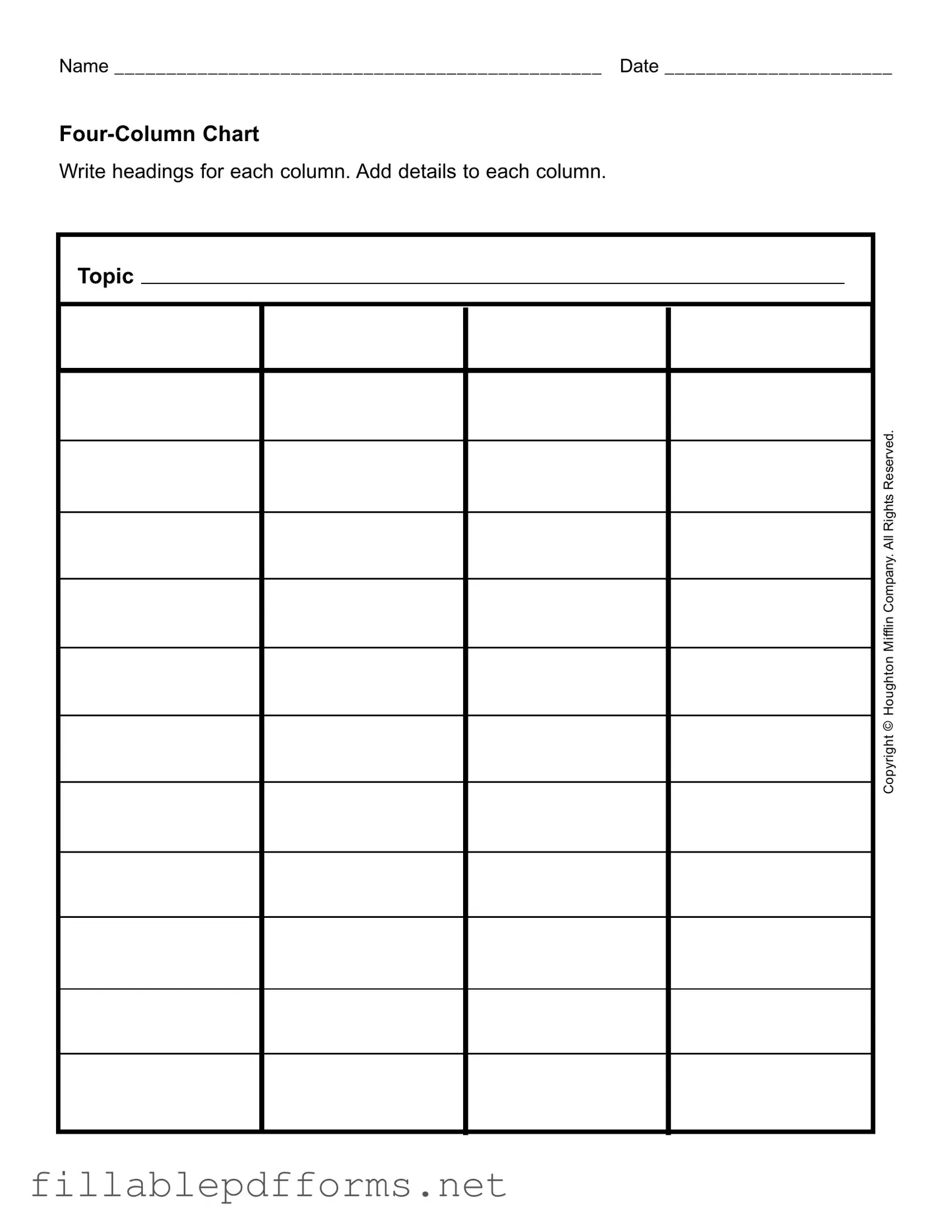The Four Column Chart form is a versatile tool designed to help individuals and teams organize information in a clear and structured manner. This form typically consists of four distinct columns, each intended for a specific type of content. Users begin by labeling the columns with headings that reflect the categories of information they wish to capture. For instance, one column might focus on key topics, while others could detail supporting facts, implications, or action items related to those topics. The form encourages thoughtful engagement with the material, as individuals fill in each column with relevant details, fostering a comprehensive understanding of the subject at hand. Whether used in a classroom setting, during a business meeting, or for personal projects, the Four Column Chart serves as an effective framework for organizing thoughts and facilitating discussion. Additionally, it can be a valuable resource for brainstorming sessions, project planning, or even as a study aid. The simplicity of the form allows for easy adaptation to various contexts, making it a favorite among educators and professionals alike.
